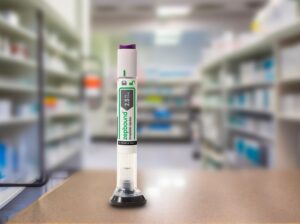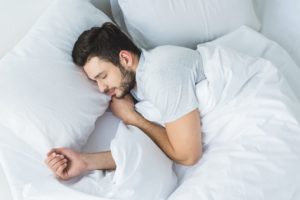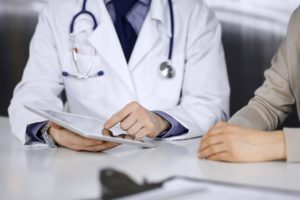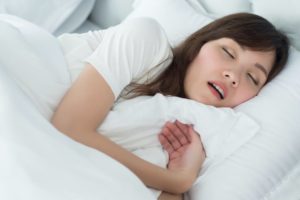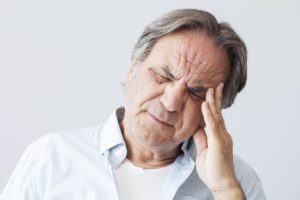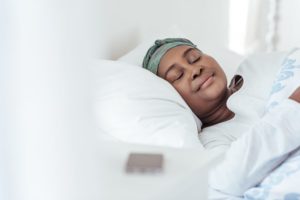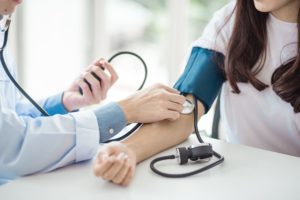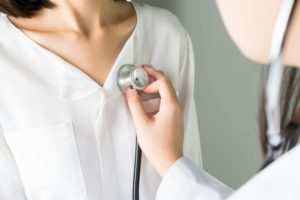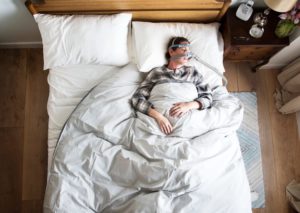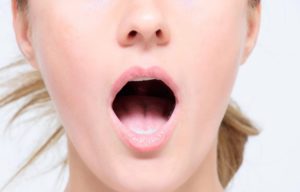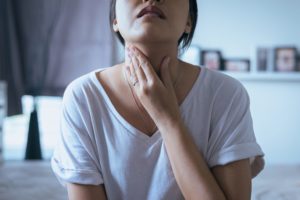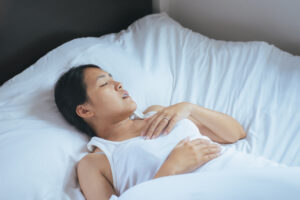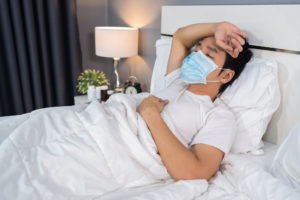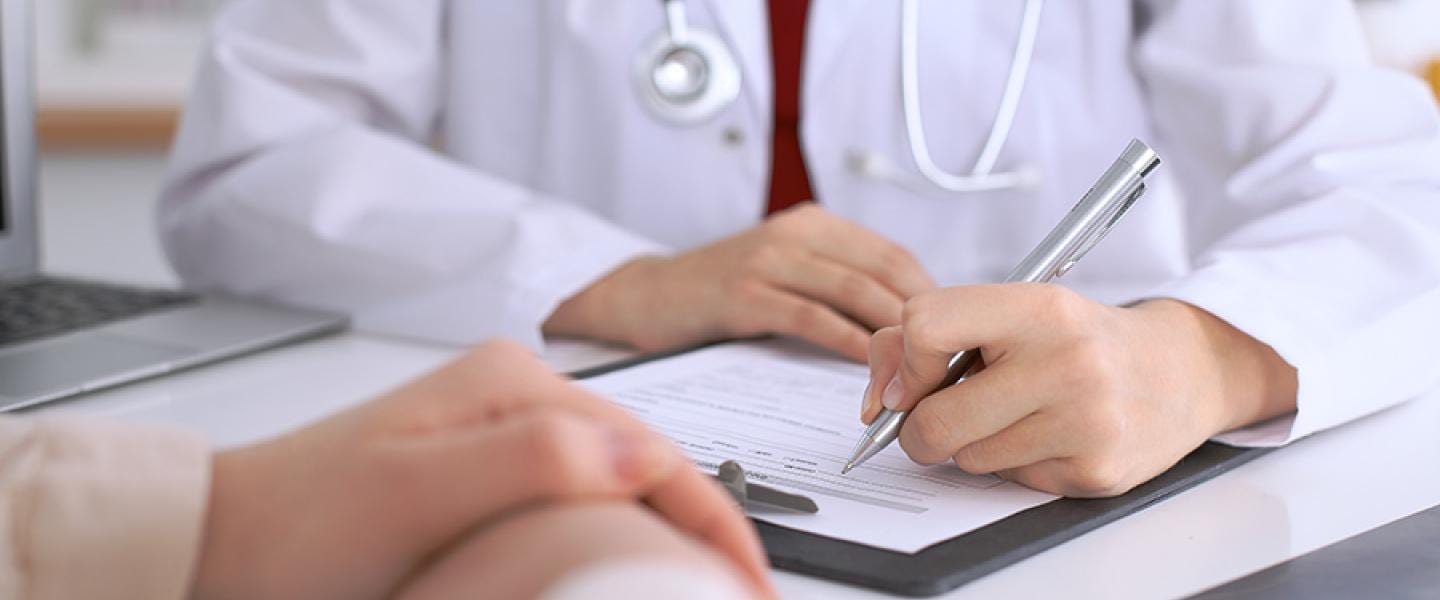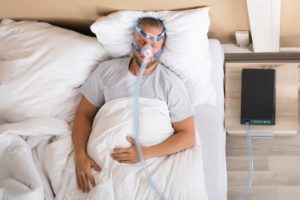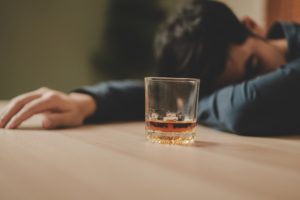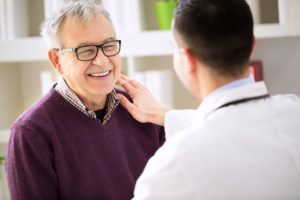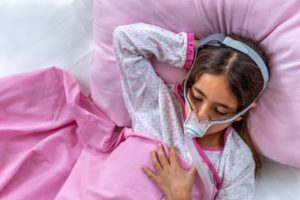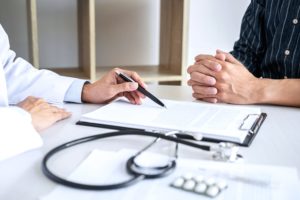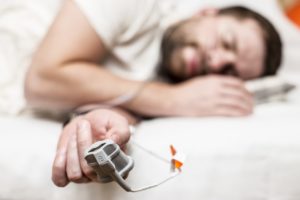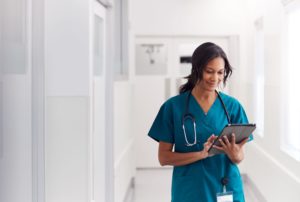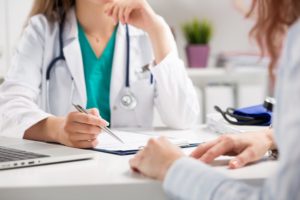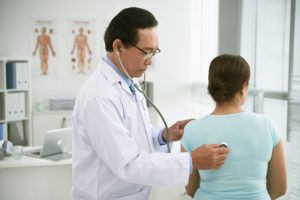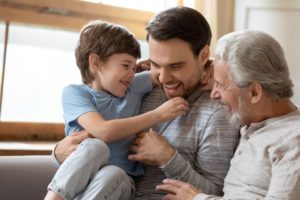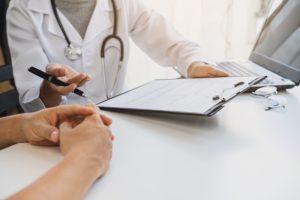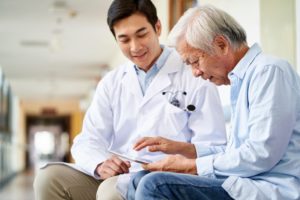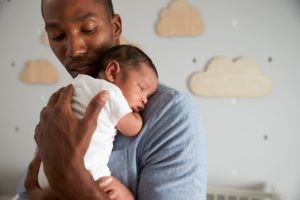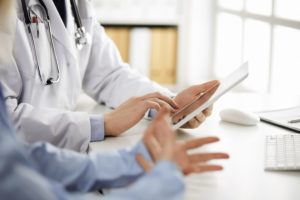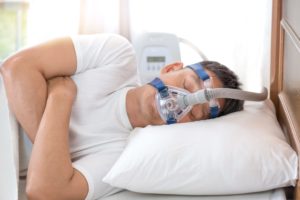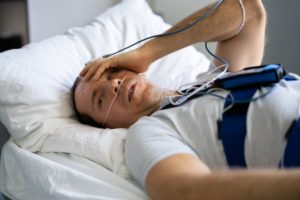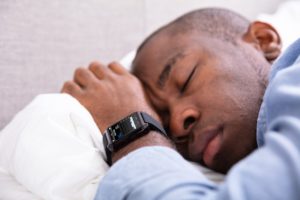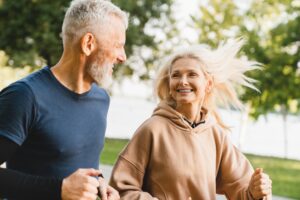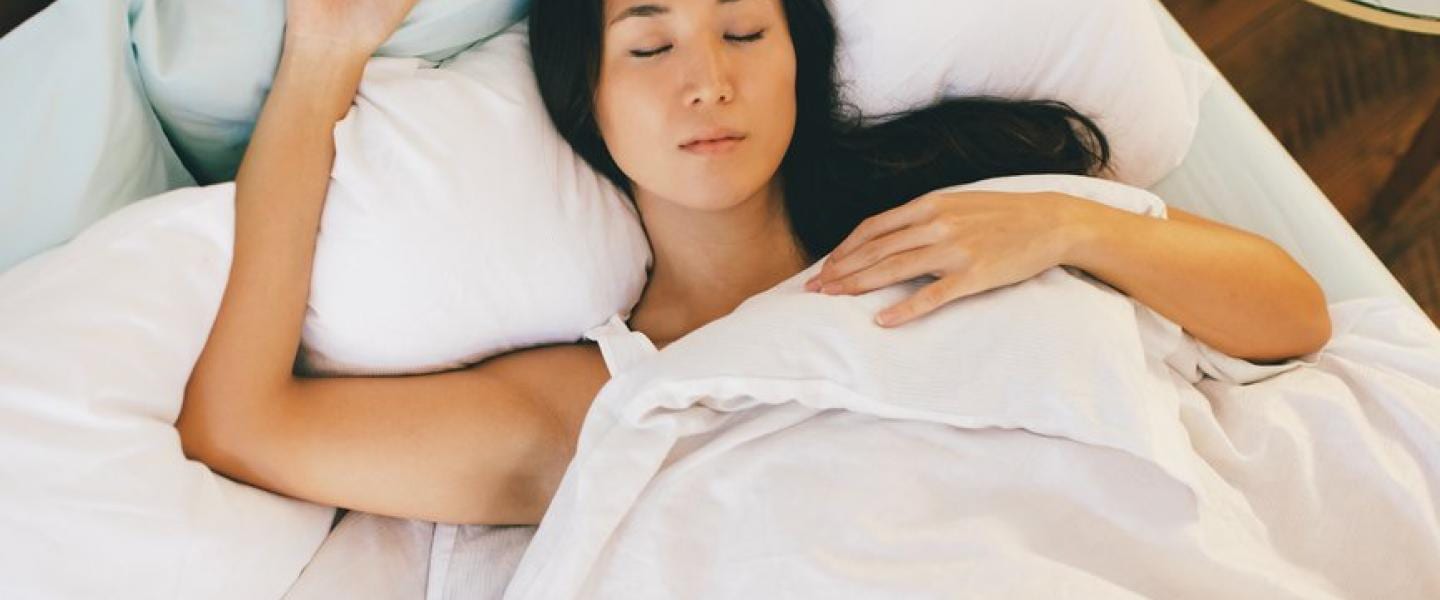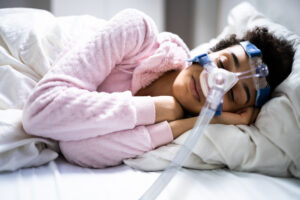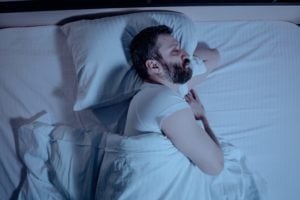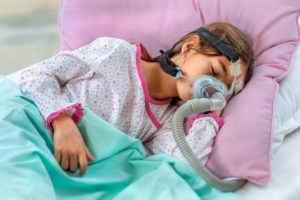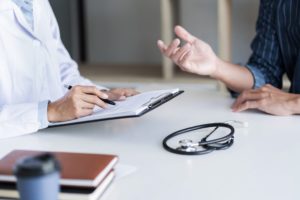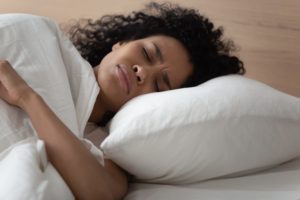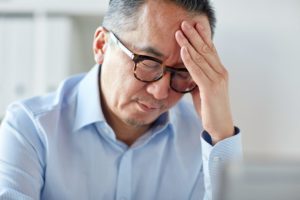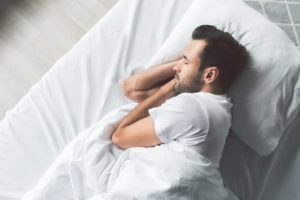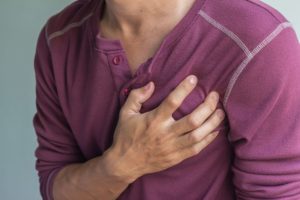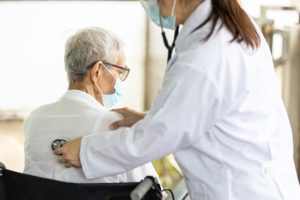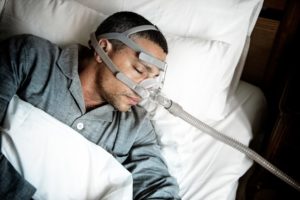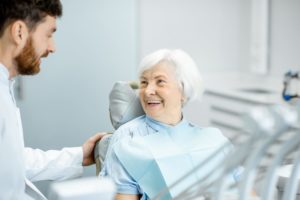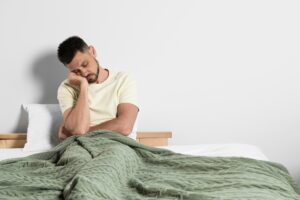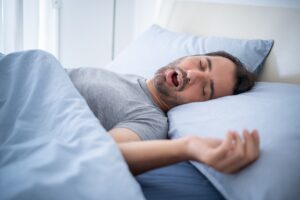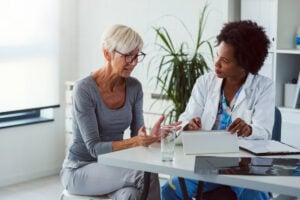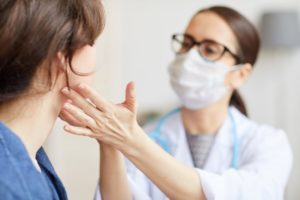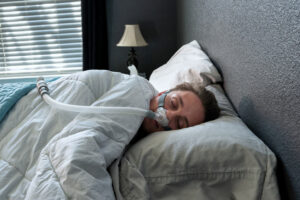When you buy through our links, we may earn a commission. Products or services may be offered by an affiliated entity. Learn more.
Home Remedies for Sleep Apnea
Sleep apnea is a sleep disorder in which a sleeper temporarily stops breathing throughout the night. There are two main types of sleep apnea. People with obstructive sleep apnea (OSA) experience breathing pauses due to the airway briefly collapsing. Central sleep apnea (CSA) involves a disconnect with how breathing is regulated in the brain. Some individuals have a combination of the two, or mixed sleep apnea.
Treatment aims to reduce or eliminate symptoms of sleep apnea like excessive snoring, restless sleep, and daytime sleepiness. While there are a number of medical and at-home treatments for sleep apnea, people with mild sleep apnea may find that home remedies help decrease their symptoms . However, people with moderate to severe sleep apnea typically need medical interventions to relieve symptoms. Lifestyle changes are often made in addition to receiving medical treatment.
Sleep apnea home remedies should never be used as an alternative to consulting with a health care provider or following a doctor’s recommended approach for treating sleep apnea.
Understand Your Sleep Apnea Risk
Answer three questions to take charge of troubled sleep.
Treating Sleep Apnea at Home
Lifestyle and behavioral changes can help treat sleep apnea symptoms . A number of steps are recommended by health experts as a first-line treatment for sleep apnea, such as changing sleep positions, avoiding alcohol and certain medications, and exercising regularly. Other approaches may be less common or their effectiveness may be unclear, such as acupuncture and herbal remedies, though some individuals find them helpful .
Before beginning at-home treatments for sleep apnea, be sure to consult with a health care provider. Your doctor can help determine which home remedies are appropriate based on the severity of your sleep apnea. Your doctor can also advise you regarding treatments that may interfere with your existing conditions or the current medications you are taking.
Change Sleep Positions
Changing from back sleeping to side sleeping can reduce the symptoms of obstructive sleep apnea. Over 50% of people with the disorder find their symptoms worsen when they sleep on their backs. This increase in symptoms may be caused by the tongue sliding back and blocking the airway and making it difficult to breathe . Side sleeping helps prevent the airway from being blocked.
There are a few ways to train the body to side sleep. Some people can change their position by placing pillows around the body to prevent them from rolling onto their backs . Another strategy is to place a tennis ball into a sock and pin or sew the sock to the back of a shirt so that it is centered between the shoulder blades. The tennis ball will cause discomfort when a sleeper tries to lie on their back. However, this technique can be quite uncomfortable and difficult to use long-term .
People who cannot change to side sleeping or who prefer sleeping on their back may find sleeping at a propped angle of 60 degrees can improve their sleep apnea symptoms. A thick pillow or series of pillows supporting the head and neck can help achieve this angle and keep the airway open.

Avoid Alcohol Use
Experts recommend avoiding alcohol because of its negative impacts on sleep apnea symptoms. Alcohol is a depressant that slows down activity in the brain, impacts mood , and relaxes muscles in the body. Muscles in the airway may be relaxed after alcohol consumption, which can cause excessive snoring and disrupt breathing during sleep. Alcohol can also increase the frequency and length of stopped breathing events. People who do not yet have sleep apnea but snore during sleep may experience sleep apnea when they drink alcohol.
Exercise Regularly
While experts commonly recommend weight loss as a treatment for sleep apnea, research suggests that exercise can improve symptoms even in people who do not end up losing weight.
A meta-analysis of studies on the relationship between sleep apnea and exercise found that exercise reduces disrupted breathing events during sleep as well as associated sleepiness. A large study with self-reporting participants found that various types of exercise, from walking to high-intensity exercise, decrease the risk for sleep apnea . Additional research with larger, controlled trials can offer more insights on the best types of exercise for treating sleep apnea.
Discuss Medication Side Effects With Your Doctor
If you are currently taking medication to address other health concerns, your doctor should closely monitor your treatment plan. It is important to tell your doctor if you believe your current medications are worsening your sleep apnea symptoms. They will be able to assess your current treatments, evaluate your dosage, and consider alternatives.
Certain types of medications that cause drowsiness and slow brain activity may worsen sleep apnea symptoms.
- Benzodiazepines: These are typically prescribed to treat generalized anxiety disorder and insomnia or to prevent seizures .
- Barbiturates: These are also prescribed for seizure prevention.
- Antihistamines: Antihistamines are a class of drugs for treating allergies . Antihistamines with side effects of drowsiness can impact sleep apnea.
- Antidepressants: Antidepressants may be prescribed to treat depression , anxiety, insomnia, and chronic pain. Sleep apnea can be worsened by antidepressants that have sedating effects.
- Opiates: These are used for pain treatment .
Wear an Oral Appliance
Oral appliances can reduce snoring and relieve sleep apnea in mild cases. An oral appliance is a device worn in the mouth to move the jaw forward and prevent the airway from being blocked during sleep.
Although a prescription is not necessarily required for an oral appliance, it is a good idea to consult with a doctor or dentist before using one. A health care provider can determine if an oral appliance is an appropriate form of treatment on an individual basis.
Try Mouth Exercises
Mouth exercises have been shown to reduce symptoms of sleep apnea, including snoring. The purpose of mouth exercises is to improve the muscles in the airway and decrease snoring. Repetitive muscle training can involve the tongue, facial and airway muscles, and lips. Other exercises may focus on breathing through the nose rather than the mouth to reduce stopped breathing events.
Use a Humidifier
For some people with sleep apnea, a humidifier in the bedroom may reduce the dryness experienced while breathing at night. Humidifiers increase the moisture in the air, which decreases the risk of dry air irritating the airway and nose.
In theory, dry air can potentially worsen sleep apnea symptoms . However, studies have not found that the humidity of a room impacts sleep apnea events.
Acupuncture
Although some people with sleep apnea may find acupuncture helpful in treating their symptoms, high-quality research needs to be conducted to determine if acupuncture is a safe and effective treatment. The current research on the subject is low in quality. Many of the existing studies are at risk for bias in favor of supporting acupuncture as a treatment for sleep apnea.
Who Should Consider Home Remedies for Sleep Apnea?
At-home treatments are appropriate for people who are working with a health care provider to manage their disorder and who have discussed these approaches with a health care provider. Home remedies may also be appropriate for people who do not yet have symptoms but want to lower their risk of developing sleep apnea.
Those with more severe sleep apnea likely need medical treatment to manage the disorder. Even if a person requires medical treatment, lifestyle changes can still help improve symptoms.
Is Treating Sleep Apnea at Home Safe?
Most home treatments for sleep apnea pose minimal health and safety risks. The main side effect is possible discomfort. Some strategies like the tennis ball technique for side sleeping may be uncomfortable. Mouth exercises may initially be uncomfortable or tiring. Home treatments are risky if a person forgoes medical treatment in favor of home treatments, especially if symptoms do not improve.
When to Consider Medical Treatment
Medical treatment for sleep apnea is appropriate if symptoms worsen or are not resolved by home remedies. If you begin sleep apnea treatment with home remedies, be sure to monitor your symptoms such as excessive snoring and daytime sleepiness. Work with your health care provider based on the progression of your symptoms.
The most common and effective medical treatment for sleep apnea is a continuous positive airway pressure (CPAP) device. A CPAP mask is worn over the nose, mouth, or both and delivers pressurized air to keep the airway open during sleep.
Tips for Using Sleep Apnea Home Remedies
When using home remedies for sleep apnea, be sure to keep track of your symptoms and discuss them with your health care provider. Home remedies alone may not be enough to completely relieve sleep apnea symptoms. People who still experience daytime sleepiness should exercise caution around high-risk activities such as driving and operating machinery.
Talking to Your Doctor About Sleep Apnea and Home Remedies
Before trying home remedies for sleep apnea, consult with your health care provider. Describe your sleep apnea symptoms and explain the home treatments you would like to try. Your doctor may have suggestions or advice based on your specific needs.
Medical Disclaimer: The content on this page should not be taken as medical advice or used as a recommendation for any specific treatment or medication. Always consult your doctor before taking a new medication or changing your current treatment.

Still have questions? Ask our community!
Join our Sleep Care Community — a trusted hub of sleep health professionals, product specialists, and people just like you. Whether you need expert sleep advice for your insomnia or you’re searching for the perfect mattress, we’ve got you covered. Get personalized guidance from the experts who know sleep best.
References
22 Sources
-
Strohl, K. P. (2021, July 8). Patient education: Sleep apnea in adults (Beyond the basics). In N. Collop (Ed.). UpToDate., Retrieved June 2, 2022, from
https://www.uptodate.com/contents/sleep-apnea-in-adults-beyond-the-basics -
National Heart, Lung, and Blood Institute. (2011, August). Your guide to healthy sleep., Retrieved June 2, 2022, from
https://www.nhlbi.nih.gov/health-topics/all-publications-and-resources/your-guide-healthy-sleep -
Kryger, M. H., & Malhotra, A. (2022, May 23). Management of obstructive sleep apnea in adults. In N. Collop (Ed.). UpToDate., Retrieved June 2, 2022, from
https://www.uptodate.com/contents/management-of-obstructive-sleep-apnea-in-adults -
National Heart, Lung, and Blood Institute. (2022, March 24). Sleep apnea treatment., Retrieved June 2, 2022, from
https://www.nhlbi.nih.gov/health/sleep-apnea/treatment -
Wang, L., Xu, J., Zhan, Y., & Pei, J. (2020). Acupuncture for obstructive sleep apnea (OSA) in adults: A systematic review and meta-analysis. BioMed Research International, 2020, 1–10.
https://pubmed.ncbi.nlm.nih.gov/32258139/ -
Omobomi, O., & Quan, S. F. (2017). Positional therapy in the management of positional obstructive sleep apnea—a review of the current literature. Sleep and Breathing, 22(2), 297–304.
https://pubmed.ncbi.nlm.nih.gov/28852945/ -
Rinaldo, V. (2022, March 2). Sleep-disordered breathing and CPAP treatment and management. In Z. Mosenifar (Ed.). Medscape., Retrieved June 2, 2022, from
https://emedicine.medscape.com/article/870192-treatment -
National Institute of Neurological Disorders and Stroke. (2022, April 25). Sleep apnea., Retrieved June 2, 2022, from
https://www.ninds.nih.gov/health-information/disorders/sleep-apnea -
Eijsvogel, M. M., Ubbink, R., Dekker, J., Oppersma, E., de Jongh, F. H., van der Palen, J., & Brusse-Keizer, M. G. (2015). Sleep position trainer versus tennis ball technique in positional obstructive sleep apnea syndrome. Journal of Clinical Sleep Medicine, 11(2), 139–147.
https://pubmed.ncbi.nlm.nih.gov/25515276/ -
MedlinePlus: National Library of Medicine (US). (2022, March 22). Alcohol., Retrieved June 2, 2022, from
https://medlineplus.gov/alcohol.html -
Stein, M. D., & Friedmann, P. D. (2006). Disturbed sleep and its relationship to alcohol use. Substance Abuse, 26(1), 1–13.
https://pubmed.ncbi.nlm.nih.gov/16492658/ -
Aiello, K. D., Caughey, W. G., Nelluri, B., Sharma, A., Mookadam, F., & Mookadam, M. (2016). Effect of exercise training on sleep apnea: A systematic review and meta-analysis. Respiratory Medicine, 116, 85–92.
https://pubmed.ncbi.nlm.nih.gov/27296826/ -
Hall, K. A., Singh, M., Mukherjee, S., & Palmer, L. J. (2020). Physical activity is associated with reduced prevalence of self-reported obstructive sleep apnea in a large, general population cohort study. Journal of Clinical Sleep Medicine, 16(7), 1179–1187.
https://pubmed.ncbi.nlm.nih.gov/32248899/ -
Craske, M. & Bystritsky, A. (2021, November 21). Generalized anxiety disorder in adults: Management. In M. B. Stein (Ed.). UpToDate., Retrieved June 2, 2022, from
https://www.uptodate.com/contents/generalized-anxiety-disorder-in-adults-management -
Neubauer, D. N. (2022, May 18). Pharmacotherapy for insomnia in adults. In R. Benca & J. G. Elmore (Eds.). UpToDate., Retrieved June 2, 2022, from
https://www.uptodate.com/contents/pharmacotherapy-for-insomnia-in-adults -
Schachter, S. C. (2022, April 25). Antiseizure medications: Mechanism of action, pharmacology, and adverse effects. In P. Garcia (Ed.). UpToDate., Retrieved June 2, 2022,
https://www.uptodate.com/contents/antiseizure-medications-mechanism-of-action-pharmacology-and-adverse-effects -
A.D.A.M. Medical Encyclopedia. (2020, May 30). Antihistamines for allergies. MedlinePlus., Retrieved June 2, 2022, from
https://medlineplus.gov/ency/patientinstructions/000549.htm -
MedlinePlus: National Library of Medicine (US). (2022, January 26). Antidepressants., Retrieved June 2, 2022, from
https://medlineplus.gov/antidepressants.html -
A.D.A.M. Medical Encyclopedia. (2020, May 10). Opiate and opioid withdrawal. MedlinePlus., Retrieved June 2, 2022, from
https://medlineplus.gov/ency/article/000949.htm -
De Felicio, C. M., da Silva Dias, F. V., & Voi Trawitzki, L V. (2018) Obstructive sleep apnea: Focus on myofunctional therapy. Nature and Science of Sleep, 10:271-286.
https://pubmed.ncbi.nlm.nih.gov/30233265/ -
A.D.A.M. Medical Encyclopedia. (2020, October 2). Humidifiers and health. MedlinePlus., Retrieved June 2, 2022, from
https://medlineplus.gov/ency/article/002104.htm -
Lappharat, S., Taneepanichskul, N., Reutrakul, S., & Chirakalwasan, N. (2018). Effects of bedroom environmental conditions on the severity of obstructive sleep apnea. Journal of Clinical Sleep Medicine, 14(04), 565–573.
https://pubmed.ncbi.nlm.nih.gov/29609708/


